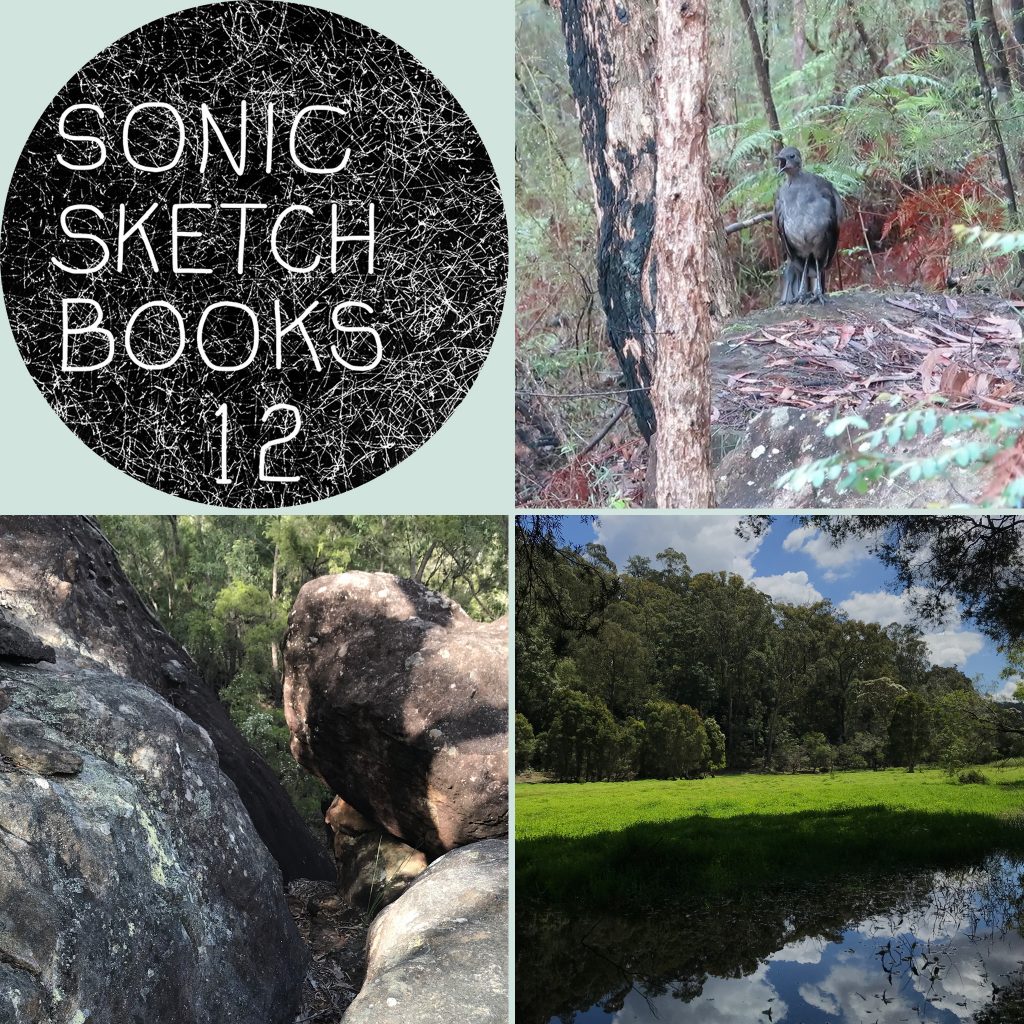
release date: 23 march 2021
origma reserve field recordings
notes and tracklist
Origma Reserve – named for Origma solitaria, the rockwarbler – is a 10 hectare off-grid bush property surrounded on all sides by healthy Sydney sandstone forest under various titles – Aboriginal Land, State forest, Crown Land, and private ownership including gazetted Conservation Reserves. The property is bounded on the east and west by 100m ridges, and a valley wetland runs south to north. There are relictual rainforest species on the south-facing slopes, swamp mahoganys dotted amongst dense stands of tall paperbarks on the wetland margins, various combinations of ironbark/turpentine and bloodwood/angphora on the hillsides . Signs of pre-colonial occupation, such as grinding grooves and sand-floored caves dot the landscape.
I’ve been making audio field recordings there since purchasing the title to the property in the mid-1990’s, to preserve it from development.
The dominant larger tree species are yellow bloodwood, forest grey gum, cabbage gum, ironbark, turpentine, various angophora and paperbarks. As with the tree combinations, the diverse understory plants vary depending on elevation, proximity to water, cardinal direction (ie sunlight) and underlying geology. It is remarkable how slight the ecological shift needs to be for the botanical complex to vary. There is very little weed invasion, other than along the vehicle tracks and what’s arrives in floodwaters from upstream ‘developed’ properties a few kilometres away.
I’ve documented over 125 bird species there, seven species of microbat were identified by a specialist team, there are various possums including so-called ’squirrel’ gliders, swamp wallabies, eastern grey kangaroos, wombats, bandicoots, innumerable invertebrates and a decent reptilian diversity from tiny geckos to meters long goannas, red-bellied blacks, tiger and brown snakes to huge swamp pythons.
All these lifeforms are entangled in ancient evolutionary networks, reliant on each other in so many ways. Understanding and appreciating the bush is not about the indexical cataloguing of individual species, separated from this crucial entanglement – the tangle IS the thing!
This brief presentation of a very few recorded encounters from the past eight years gives some sense of the brilliant aural diversity of intact Sydney sandstone country. Future episodes of Sonic Sketchbooks will further explore this audio archive.
tracklist
03:00 – 06:30 summer storm, noisy friarbirds calling, afternoon 22Jan2021
06:30 – 09:15 helicopter triggers golden whistler responses, morning 20 Sep16
09:15 – 13:00 striped marsh frogs, channel-bill cuckoos calling 03 Sep15
13:00 – 18:25 lyrebird and cicadas 23Jan21
18:25 – 21:00 eastern froglets calling near hillside stream 14Feb20
21:00 – 24:00 thornbills & other small birds in wattles near wetland 20Jun20
24:00 – 26:00 dozens of a bee-fly species over hot sand 21Jan21
26:00 – 30:00 gathering of dozens of gang-gang cockatoos in ironbark trees; bell miners calling in distance 09Dec12
30:00 – 41:50 yellow-tailed black cockatoos, glossy black cockatoos, eastern whipbirds and many other forest species, surrounding a small billabong, late afternoon – the background white noise is wind blowing across the dense forest canopy of an adjacent hillside, the close knocking sounds are insects landing on plant stems, the recorder was placed on the ground in dense native grasses 05Oct20
41:50 – 41:30 family group of four origma solitaria, the rockwarbler, bathing in a shallow pool in a cave 25Nov19
41:30 – 49:15 pair of rockwarblers 02Oct17
49:15 – 53:30 group of grey shrike-thrush, skirmishing in yellow bloodwood and angophora forest 07March21
53:30 – 01:05:00 lone male lyrebird singing on one of his cleared forest dance grounds, late afternoon 16Oct14
